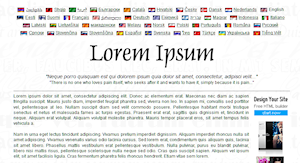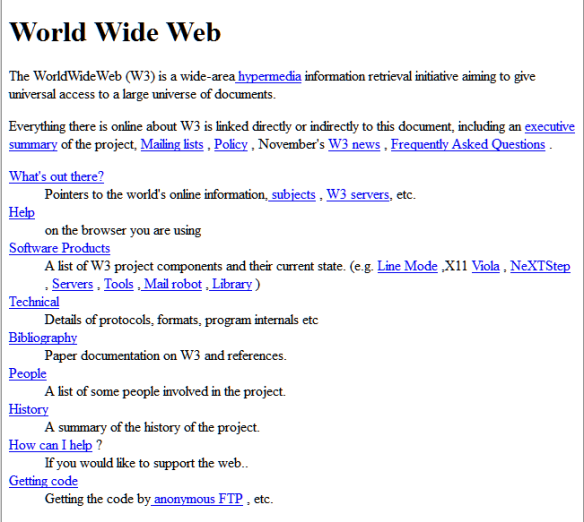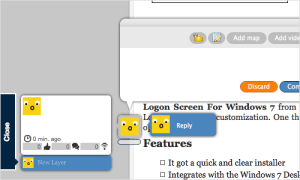 The granddaddy of all Lorem Ipsum services is Lorem Ipsum – Lipsum generator. Lorem ipsum has been used for hundreds of years to generate dummy content for prototypes, wireframes, and galleys. Created originally for print material, it has evolved online beyond the original Latin to a variety of forms, formats, and “languages” for web use.
The granddaddy of all Lorem Ipsum services is Lorem Ipsum – Lipsum generator. Lorem ipsum has been used for hundreds of years to generate dummy content for prototypes, wireframes, and galleys. Created originally for print material, it has evolved online beyond the original Latin to a variety of forms, formats, and “languages” for web use.
Selection of Lorem Ipsum types can be tricky. If you are working on a project for fun, you can use anything that tickles your fancy. If you are building a wireframe or prototype for a client, while Lorem Ipsum might be appropriate and professional, choosing dummy content that matches the intent and purpose of the site might be wiser, such as using the Cupcake Ipsum for a food site, a Lorem Ipsum alternative that features names of deserts with Latin, Pasta Ipsum – for all your macaroni product lorem ipsum needs for pasta lovers, or Veggie Ipsum – the vegetarian lorem ipsum generator for an organic restaurant or farmers market seller.
Mustard salsify welsh onion cucumber earthnut pea okra brussels sprout. Yarrow green bean gumbo garlic welsh onion wakame pumpkin wattle seed yarrow sierra leone bologi taro gram. Catsear amaranth celery wattle seed sorrel shallot pumpkin.
Onion wattle seed quandong parsley fava bean rutabaga courgette cucumber. Celery potato melon bok choy epazote zucchini artichoke fava bean beetroot groundnut desert raisin onion black-eyed pea jícama coriander celery. Lotus root spring onion endive arugula tomatillo sorrel pea dulse chickweed turnip gourd plantain cauliflower tatsoi bush tomato komatsuna rutabaga. Water chestnut endive pea sprouts gram lentil spinach chicory lettuce soybean melon turnip greens celery parsnip artichoke okra swiss chard eggplant aubergine. Water spinach garlic tomatillo tigernut catsear peanut amaranth melon garlic.
Consider Bacon Ipsum for carnivores or Cheese Ipsum for cheese lovers.
Cheese slices lancashire jarlsberg. Monterey jack fromage say cheese pepper jack fondue cheese strings blue castello cheese triangles. Cheesecake squirty cheese cheesecake fromage frais mascarpone cheese and wine edam cheesecake. Stinking bishop stinking bishop.
Manchego rubber cheese cheesy grin. Fromage frais port-salut camembert de normandie port-salut port-salut manchego camembert de normandie cheese triangles. Bocconcini bocconcini cheesy feet cheese triangles macaroni cheese cheese slices paneer cut the cheese. Edam.
Cheese on toast who moved my cheese the big cheese. Queso cheddar pecorino fromage frais parmesan mozzarella brie lancashire. Jarlsberg smelly cheese lancashire cheddar stinking bishop roquefort port-salut cheesecake. Cheese and wine fondue blue castello smelly cheese emmental pecorino parmesan.
For serious sites and clients, the traditional Lorem Ipsum is a wise choice, but like the food versions of Lorem Ipsum, there are more content specific alternatives such as Corporate Ipsum for corporate speak, and Not Lorem Ipsum for industry based Lorem Ipsum generator. These create dummy content based upon the specific industry of the company such as app development, advertising, banking, cafes, restaurants, accounting, car sales, dentists, and more.
Check out this dentist version of Lorem Ipsum.
We are a friendly team of dentists, hygienists and receptionists who work together to ensure that you receive the best treatment that you require at a time that suits you. All of our dentists are accredited by The British Dental Association Good Practice Scheme, so you can rest assured that your smile really is in good hands.
We offer NHS dental treatment to children and have a very easy private payment scheme for our adult patients. We encourage everyone to visit the dentist regularly so that we can prevent any problems from occurring and the more you visit the less likely it is that we will have to do anything “scary!”
If you are working on a static HTML site, <html>ipsum is Lorem Ipsum set within HTML tags for paragraphs, lists, forms, tables, and more. Several alternative Lorem Ipsum generators offer the option for HTML including One-Click Lorem Ipsum Generator and Loripsum.net.
Web 2.0 Ipsumr is a popular alternative Lorem Ipsum generator using nonsensical Web 2.0 startup names in keeping with the naming of things like Google, Woopra, Orkut, Zynga, Squidoo, Meebo, etc. Hipster Ipsum is for the younger generation with lines such as:
Sriracha tofu ethical, cardigan wayfarers bushwick butcher kale chips scenester mcsweeney’s sustainable jean shorts Austin. Gastropub VHS farm-to-table, lomo whatever authentic thundercats street art. Iphone gentrify pour-over street art, small batch food truck keffiyeh DIY american apparel artisan high life cray twee fingerstache. Forage mumblecore readymade next level, single-origin coffee keytar swag cliche mcsweeney’s american apparel squid chambray. Occupy vice whatever forage, brooklyn next level direct trade messenger bag pitchfork.
Why stop with clever nonsense Web 2.0 names. Use Twipsum to generate your own Twitterverse originals in Lorem Ipsum fashion.
Continue reading →


 This is a tutorial on how to link to the various features found on a typical WordPress site.
This is a tutorial on how to link to the various features found on a typical WordPress site.  In one example,
In one example,  What is a “call to action” on a site?
What is a “call to action” on a site?


